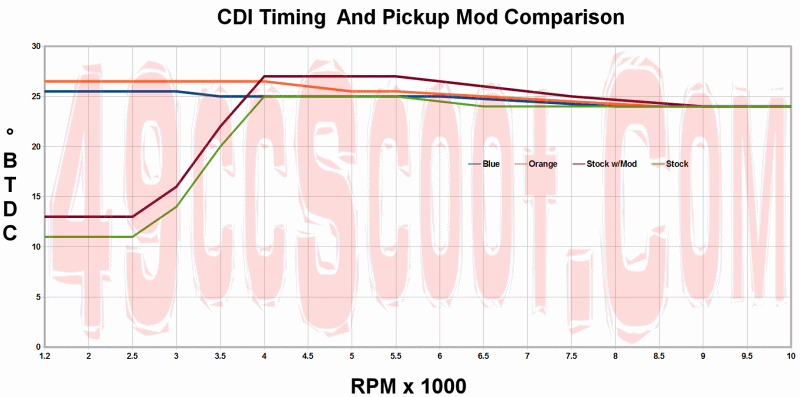Quote:
Originally Posted by blueboy5000

The gy6 139, 152, and 157 all use exactly 750ml of 10W40 oil.
|
Sir, please pardon me but I believe your information is flawed. All of the GY6 139s I've serviced (a few hundred now) held exactly 600 - 650ml of oil to fill to top of cross hatch markings on the dipstick. Through testing I found that as a rule of thumb 550ml reduces the friction of the engine and allows it to perform better without adverse effects. Friction robs power from the engine which the rider does not get to use.
As to 10W40, by all means use what works for you, but ask yourself WHY are many of the car makers like Mercedes specifying 0W20 and 10W30? The answer obviously is friction reduction.
Quote:
Originally Posted by blueboy5000

Leaking crankseal after changing seal ( and most times, before changing crankseal) is 99% of the time due to worn crankshaft bearings.
|
If as you suggest, the crankshaft bearings are usually the culprit, then why did a totally new scooter have an oil leak from the crank seal on another scooter forum admins test scooter. His bearings were tested and they were within specification. Here is the link to his project on a new scooter, please read all his testing / troubles.
http://49ccscoot.proboards.com/threa...ences-upgrades
From testing I have found the scooters develop extremely high crankcase pressures and this coupled with, what I believe is too much oil, is most likely the culprit for blowing oil past the seal.
Quote:
Originally Posted by blueboy5000

Physically altering the magnets or pick-ups, or repositioning them, in the Hall-Effect igntion system is a bad and imprecise method that can damage the engine, and CDI. The best way to advance timing is to use an "advanced curve" CDI.
|
If as you suggest that repositioning the pickup / crank sensor is a bad idea and can damage the engine, then how come the American auto makers used this approach to automatically advance ignition timing using vacuum from 1974 to the mid 1990s and had no problems with it.
The above referenced forum thread goes into great detail about testing CDIs on page 15 of that thread. He also included a video so that others could see.I have personally confirmed his test results as they are repeatable by anyone.
Here is a chart that he created to show the results of his testing:

As to the idea of an user adjustable "advanced curve" CDIs, I have not tested one yet, but from research I understand it offers a full advance upon starting OR at higher rpm. These are the only options with them.